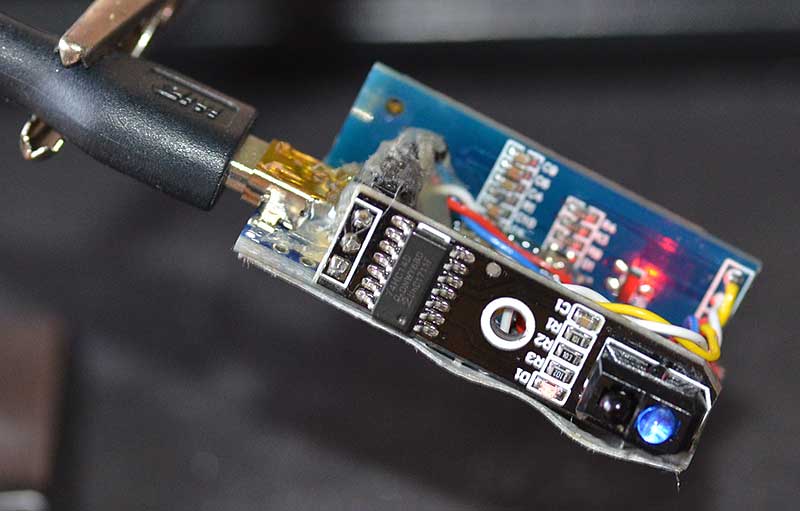
How Does a Tachometer Work on a Watch? A Complete Insight
Share
For tech professionals and enthusiasts alike, the world of timepieces is fascinating. Among the many intricate features that watches can boast, the tachometer stands out as an emblem of precision and functionality. But how does a tachometer work on a watch? In this comprehensive article, we will delve into the mechanics of tachometers in watches, their history, usage, and significance in both professional and personal contexts.

Understanding the Basics of a Tachometer
A tachometer is a device designed to measure the rotational speed of an object, usually in revolutions per minute (RPM). When integrated into a watch, it becomes an indispensable tool for motorsport enthusiasts and pilots who need to measure speed against time.
The History of the Tachometer
Tachometers have their origins in the early 19th century. Initially used in automobiles, they made their way into wristwatches as technology advanced. The concept of measuring speed has always been linked to performance. As the automotive and aeronautics industries embraced the tachometer, it was only natural that it transitioned into the realm of luxury timepieces.
The Mechanism Behind a Tachometer in Watches
Understanding how a tachometer functions within a watch can be quite intriguing. Typically, a tachometer scale is printed on the watch's outer bezel or dial. When calculating speed, you generally need a fixed distance. Here's a basic breakdown of its operation:
- Step 1: Start the chronograph function of the watch.
- Step 2: When the vehicle or object covers a known distance, stop the chronograph.
- Step 3: Read the time elapsed on the chronograph hand and use the tachometer scale to determine speed.
This simple yet effective mechanism showcases the brilliant design of tachometers in watches, allowing for accurate speed measurement in real time.
Application Scenarios for Tachometers
Now that we understand the fundamental principles, lets explore some real-world scenarios where a tachometer plays a pivotal role:
- Motorsports: Drivers use tachometers to monitor speed and performance during races.
- Aviation: Pilots employ tachometers to gauge speed during flight.
- Leisure and Lifestyle: Enthusiasts use tachometers for recreational activities like biking to monitor their speed.
Benefits of Using a Tachometer on a Watch
Having a tachometer on your wrist offers multiple advantages:
- Convenience: Easy access to speed measurement without needing additional devices.
- Style: Adds a touch of sophistication and technical prowess to your timepiece.
- Efficiency: Real-time monitoring allows for better control and decision-making.
Incorporating a tachometer into a watch not only enhances functionality but also elevates the overall aesthetic appeal.
Different Types of Tachometers in Watches
There are various types of tachometers you'll encounter in watches:
- Analog Tachometer: Uses a hand to indicate speed on a scale.
- Digital Tachometer: Displays speed in numerical form, typically providing a clearer readout.
Both serve the same purpose, yet cater to different preferences and styles of use.
Real-World Examples of Tachometer Watches
Several renowned watchmakers have integrated tachometers into their designs. Some notable models include:
- Omega Speedmaster: A classic chronograph with a built-in tachometer scale.
- Tag Heuer Carrera: Known for its racing heritage and precise tachometric measurements.
- Breitling Navitimer: A pilot's watch that includes a comprehensive tachometer function.
How to Use a Tachometer on Your Watch
Using a tachometer effectively requires a bit of practice. Heres a guide on how to maximize its potential:
- Know Your Distance: Be aware of the distance over which you are measuring speed; 1 kilometer or 1 mile is ideal.
- Timing: Start your chronograph when you begin covering the distance and stop it when you reach your target.
- Speed Calculation: Use the time elapsed to read off your speed using the tachometer scale.
This structured approach ensures that you glean accurate insights while on the move.
Future of Tachometers in the Watch Industry
With technological advancements accelerating at an unprecedented rate, the future of tachometers in watches looks promising. Digital innovations and smart functionalities may redefine how users interact with tachometric data.
Some potential developments include:
- Smart Watches: Integrating tachometric data with GPS technology for more precise measurements.
- Real-Time Data Analysis: Offering users live stats during activities, enhancing decision-making.
As the watch industry evolves, so will the implementation of tachometers, continuing to serve as valuable tools for professionals and enthusiasts.
Conclusion
In summary, the question of how does a tachometer work on a watch reveals a world of intricate functionality and design. Whether you're a motorsport enthusiast, a pilot, or simply someone who enjoys the symbiosis of style and technology, tachometers can enrich your experience. The blend of aesthetics, convenience, and precision make tachometer watches a fascinating topic and a worthy investment.
To dive deeper into the workings of tachometers, check out this resource on what a tachometer is.
You can also learn more about various digital tachometers and their applications in different fields.

FAQs
1. Can I use a tachometer watch for activities other than racing?
Absolutely! Tachometer watches are versatile and can be used for various timing and speed measurement functions beyond racing, such as cycling and jogging.
2. Do all watches with a tachometer function the same way?
While the basic principles are similar, the specifics of how each watch operates can vary based on the brand and model.
3. Is a tachometer only useful for speed measurement?
A tachometer's primary function is to measure speed; however, it can also offer insights related to performance optimization in various scenarios.
